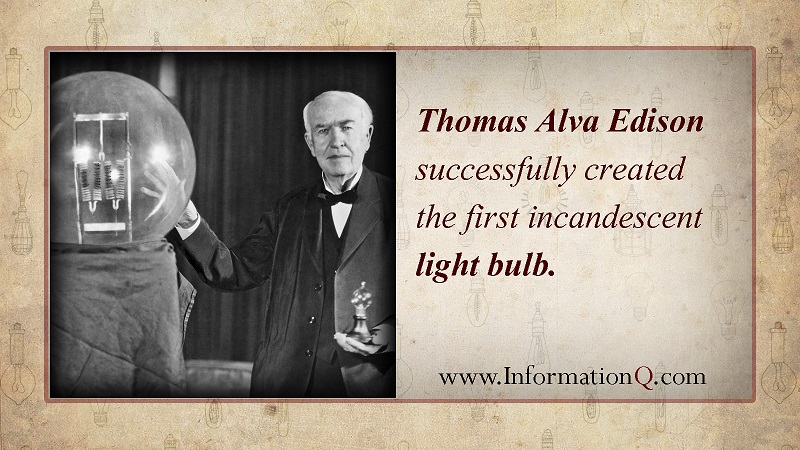Electricity is the versatile source of energy that has evolved over time into a necessity. Since the same was always present in nature, discharged in the form of lightning or created due to friction between electrically charged particles, so it can be fairly said to be “discovered” than “invented”.
Electricity in its natural form is impossible to conserve and utilise for the benefit of mankind. The transformation of electrical phenomena into usable electric current is the result of studies and experiments by genius human minds who not only achieved several breakthroughs in electrical technology but also directed the same towards commercial and residential use.
History of Electricity?
Ancient Egyptians, in their texts from 2750 BCE referred about stingrays and electric catfish who delivered electric shocks, which were again mentioned later by the ancient Roman, Greek and Arabic physicians.
The Ancient Greeks discovered static electricity as a result of friction between fur and amber which was reported by Thales of Miletus around 600 B.C. Years later in 1600, an English scientist William Gilbert came up with his studies on electricity and magnetism and coined the term “electricus” referring to the property of attraction as a result of friction.
The subject of electricity gained more intellectual curiosity during the 17th century which inspired scientists like Otto Von Guericke, Stephan Gray, and Robert Boyle. Otto von Guericke invented the crude machine for producing static electricity by rubbing balls of sulfur in 1660. Irish alchemist Robert Boyle observed that electric force can be transmitted through vacuum and mutuality of attraction and repulsion. Stephan Gray made a distinction between conductors and non-conductors.
In June 1752, Benjamin Franklin conducted an experiment by attaching a metal key to a kite and flown it in the stormy sky, he observed lightning electrical sparks traveled from the key to his hands through the dampened string. Another scientific leap was taken through the invention of Leyden jar which was capable of storing static electricity consisting both positive and negative charges. Franklin along with C.F. Du Fay recognised positive and negative electricity.
During the late 17th and early 18th centuries, experimentalists like Luigi Galvani demonstrated the discovery of bio-electromagnetics which proved that electricity is actually the medium for the transmission of signals by neurons and Alessandro Volta invented Voltaic Pile, a battery consisting layers of copper and zinc as a viable source of electrical energy. The famous invention of electric motor enabling generation of electric current was made by Michael Faraday in 1821 followed by the discovery of Ohm’s Law in the year 1827 by a German physicist and mathematician Georg Simon Ohm.
James C. Maxwell developed equations describing the electromagnetic field in the 1860’s and predicted electromagnetic waves travel with the speed of light. Later in 1985, Guglielmo Marconi developed the radio which transmitted radio signals in the form of electromagnetic waves.
Read also this
Who Invented the Light Bulb?
Read more ‘Who Invented’ posts
German physicist, Heinrich Rudolf Hertz in the year 1887 made his observations that electrodes create electrical sparks when illuminated by ultraviolet radiation and established the photoelectric effect. Later in 1905, Albert Einstein revolutionised the quantum theory by publishing that light is carried in discrete quantized packets as an explanation towards the photoelectric effect and was awarded Noble Prize in 1921 for his contribution in the field.
One of the greatest inventors of all times, Thomas Alva Edison, in 1879, invented the light bulb. The filaments of the early incandescent light bulbs were built of cotton thread soaked in carbon before it was replaced by durable metal tungsten. Next, Edison focussed on the development of practical and cheap electricity for industrial and residential usage. He built the first direct current electric power generation plant in 1882 in New York.
Thomas Edison faced tough competition from Nikola Tesla, who invented alternating current from the rotating magnetic field. Tesla strived to reduce the cost of generating electricity and economising its transmission for commercial utilisation. Tesla collaborated with George Westinghouse and patented the AC system; he later founded the Tesla Electric Company and invented the Tesla Coil.
Generation and Application
Electricity is generated from fossil fuel combustion or kinetic energy or from nuclear reactions by electro-mechanical generators. The steam turbine invented in 1884 by Sir Charles Parsons generates electrical energy utilising various heat sources relying on the electromagnetic principle.
The late 19th century witnessed the invention of the transformer which enabled efficient transmission of electricity at the highest voltage but lowest current. Now, electricity can be produced economically at power plants and transported efficiently to long distances; the power generation can be modulated as per consumption basis since electrical energy cannot be stored in large quantities.
As earlier witnessed, electrical energy was applied for lighting the incandescent bulbs, also is used in telecommunications through optical fibre and satellites. Electric motors installed in vehicles produce a current through electromagnetism and provide motive power. In the present era of modern circuitry, integrated circuits comprising of micro transistors are installed in electronic devices for improving performance, speed, and accuracy.




Leave a Reply